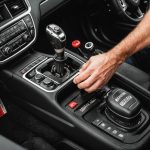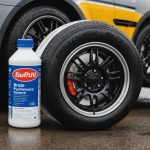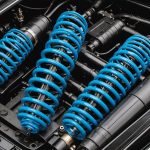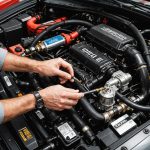Maximizing Fuel Efficiency: Effective Strategies to Enhance Your Car’s Aerodynamics for UK Highway Driving
In the era of rising fuel costs and increasing environmental concerns, optimizing your car’s fuel efficiency has become more crucial than ever. One of the key factors in achieving this is to enhance your vehicle’s aerodynamics, especially when driving on UK highways. Here’s a comprehensive guide to help you improve your car’s fuel economy through better aerodynamics and efficient driving habits.
Understanding Aerodynamics in Vehicle Design
Aerodynamics plays a significant role in how your car interacts with the air it moves through. The design of your vehicle can either work for or against you in terms of fuel efficiency. Here are some key points to consider:
This might interest you : Essential Tips to Shield Your Car”s Undercarriage from Winter Salt Corrosion in the UK
Drag and Its Impact on Fuel Consumption
Drag is the force that opposes the motion of your car through the air. A higher drag coefficient means more energy is required to move your vehicle at the same speed, which directly translates to higher fuel consumption. Cars with sleek, streamlined designs tend to have lower drag coefficients, making them more fuel-efficient.
Air Resistance and Rolling Resistance
Air resistance and rolling resistance are the two main types of resistance your car faces on the road. While air resistance becomes more significant at higher speeds, rolling resistance is more relevant at lower speeds. Optimizing your car’s aerodynamics can help reduce air resistance, but it’s also important to maintain proper tire pressure to minimize rolling resistance.
Also to read : Top Strategies to Keep Your UK Car”s Interior Clear of Fog During Rainy Weather
Modifying Your Vehicle for Better Aerodynamics
There are several modifications you can make to your car to improve its aerodynamic profile:
Front and Rear Spoilers
Adding front and rear spoilers can significantly improve your car’s aerodynamics. These spoilers help to redirect airflow around the vehicle, reducing drag and improving stability at high speeds.
Side Skirts and Diffusers
Side skirts and diffusers work together to smooth out the airflow around the sides and underside of your car. This can reduce turbulence and drag, leading to better fuel efficiency.
Wheel Covers and Hubcaps
Wheel covers and hubcaps can help streamline the airflow around your wheels, which can be a significant source of drag. However, ensure that any modifications do not compromise the cooling of your brakes.
Efficient Driving Habits
While modifying your vehicle can help, your driving habits also play a crucial role in maximizing fuel efficiency.
Maintaining Optimal Speed
Driving at a consistent speed is key to efficient fuel use. Avoid sudden accelerations and hard braking, as these can significantly reduce your fuel economy.
Using Cruise Control
Cruise control can be a great tool for maintaining a constant speed, especially on long highway drives. This can help reduce fuel consumption by avoiding the fluctuations in speed that occur with manual driving.
Tire Pressure
Proper tire pressure is essential for reducing rolling resistance. Underinflated tires can increase fuel consumption by up to 3%, so make sure to check your tire pressure regularly.
Practical Tips for Efficient Driving
Here are some practical tips to help you drive more efficiently:
- Accelerate Smoothly: Avoid sudden accelerations, as they consume more fuel. Instead, accelerate smoothly and gradually.
- Use Gears Wisely: For manual transmission cars, use the correct gear for the speed you are driving. For automatics, use the ‘Eco’ or ‘Fuel-Efficient’ mode if available.
- Remove Extra Weight: Extra weight in your car increases fuel consumption. Remove any unnecessary items from your trunk or back seat.
- Plan Your Route: Plan your route in advance to avoid traffic and construction, which can lead to idling and reduced fuel efficiency.
Fuel-Efficient Driving Techniques
Eco Pro Mode
Many modern cars come with an ‘Eco Pro’ mode that adjusts various parameters such as engine performance, transmission, and air conditioning to optimize fuel efficiency. Using this mode can help you save fuel, especially during long drives.
Avoid Idling
Idling for extended periods can waste a significant amount of fuel. If you’re going to be stopped for more than 30 seconds, it’s better to turn off your engine.
Regular Maintenance
Regular maintenance of your car is crucial for maintaining its fuel efficiency. Ensure that your engine is well-tuned, and your air filter is clean. Here’s a detailed list of maintenance checks:
- Oil Changes: Regular oil changes can improve your engine’s efficiency.
- Air Filter: A clean air filter can improve your car’s performance and fuel economy.
- Spark Plugs: Worn-out spark plugs can reduce fuel efficiency; replace them as recommended.
- Tire Alignment: Proper tire alignment can reduce rolling resistance and improve fuel economy.
Comparative Analysis of Fuel-Efficient Vehicles
Here’s a comparative table of some popular fuel-efficient vehicles available in the UK market, highlighting their key features and fuel economy:
| Vehicle Model | Fuel Type | Fuel Economy (mpg) | CO2 Emissions (g/km) | Price Range (GBP) |
|---|---|---|---|---|
| Toyota Prius | Hybrid | 52.3 – 78.5 | 70 – 86 | 24,000 – 30,000 |
| Honda Civic Hybrid | Hybrid | 45.6 – 61.4 | 96 – 108 | 23,000 – 28,000 |
| Volkswagen Golf TDI | Diesel | 47.9 – 64.2 | 109 – 122 | 20,000 – 25,000 |
| BMW 320d | Diesel | 47.9 – 64.2 | 109 – 122 | 25,000 – 35,000 |
| Nissan Leaf | Electric | N/A | 0 | 26,000 – 32,000 |
Real-World Examples and Anecdotes
The Impact of Aerodynamics on Fuel Efficiency
A study by the European Automobile Manufacturers Association found that aerodynamic improvements can reduce fuel consumption by up to 10% at high speeds. For example, the Volkswagen Golf TDI, with its sleek design and aerodynamic features, achieves an impressive fuel economy of up to 64.2 mpg.
Efficient Driving Habits in Action
A driver who commutes 50 miles each day can save significant amounts of fuel by adopting efficient driving habits. By maintaining a consistent speed, using cruise control, and ensuring proper tire pressure, this driver could reduce their fuel consumption by up to 15%.
Maximizing fuel efficiency through better aerodynamics and efficient driving habits is a multifaceted approach that requires both vehicle modifications and changes in driving behavior. Here are some final tips to summarize:
- Modify Your Vehicle: Add spoilers, side skirts, and diffusers to improve aerodynamics.
- Maintain Proper Tire Pressure: Regularly check and adjust your tire pressure to reduce rolling resistance.
- Drive Smoothly: Avoid sudden accelerations and hard braking.
- Use Cruise Control: Maintain a constant speed on highways.
- Regular Maintenance: Keep your engine well-tuned and your air filter clean.
By implementing these strategies, you can significantly improve your car’s fuel efficiency, reduce fuel consumption, and contribute to a more sustainable environment.
Additional Resources
For those looking to delve deeper into the world of fuel-efficient driving, here are some additional resources:
- Fuel Efficiency Guides: Many car manufacturers provide detailed guides on how to optimize fuel efficiency for their specific models.
- Driving Courses: Consider taking a defensive driving course that focuses on fuel-efficient driving techniques.
- Fuel-Efficient Products: Look into products like fuel additives and system cleaners that can help maintain your car’s performance and efficiency[2].
By combining these resources with the strategies outlined above, you can ensure that your car is running as efficiently as possible, saving you money and reducing your environmental impact.
Maintenance Tips for Sustaining Aerodynamic Efficiency
Consistent car maintenance is key to maximizing both fuel efficiency and overall vehicle performance. Start by conducting routine checks to ensure the integrity of your vehicle’s bodywork. Small dents or misalignments may seem trivial but can disrupt airflow, increasing drag and reducing efficiency.
Regular cleaning is equally vital. Dirt and debris accumulate over time, negatively impacting airflow around your vehicle. By keeping your car clean, you help maintain its designed performance maintenance standards.
In addition, monitor structural elements such as spoilers, mirrors, and underbody panels. These components can become misaligned or loose, leading to significant aerodynamic penalties. Addressing these issues promptly prevents performance decline.
For optimal results and to sustain your car’s aerodynamic efficiency, consider these tips:
- Check bodywork integrity regularly.
- Clean your vehicle to maintain efficient airflow.
- Inspect structural elements for alignment and secure fit.
With these practices, you not only ensure your vehicle remains fuel-efficient but also contribute to its long-term health and optimal performance. Simple, regular attention pays off by helping you avoid costly repairs and unnecessary fuel consumption. Keeping your car in top condition is both an investment in efficiency and a step toward sustainability.











